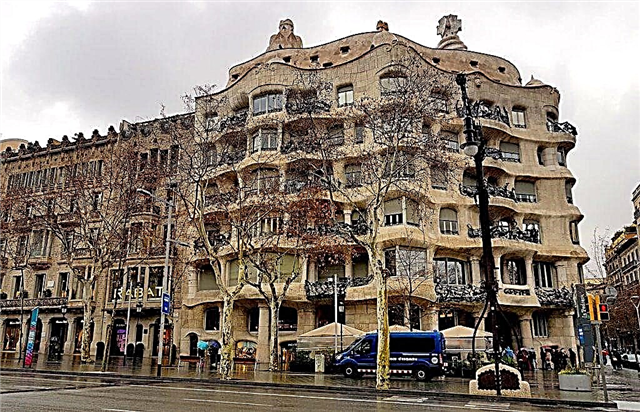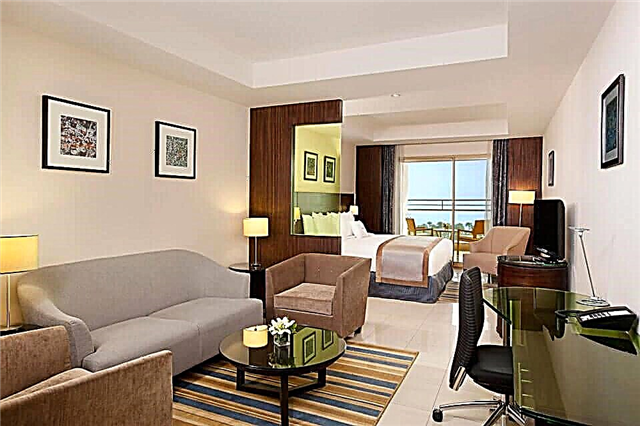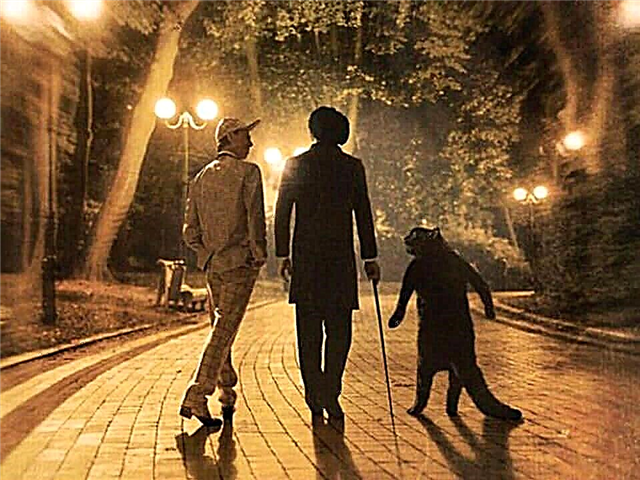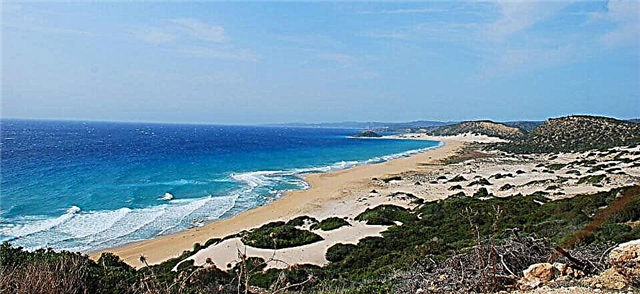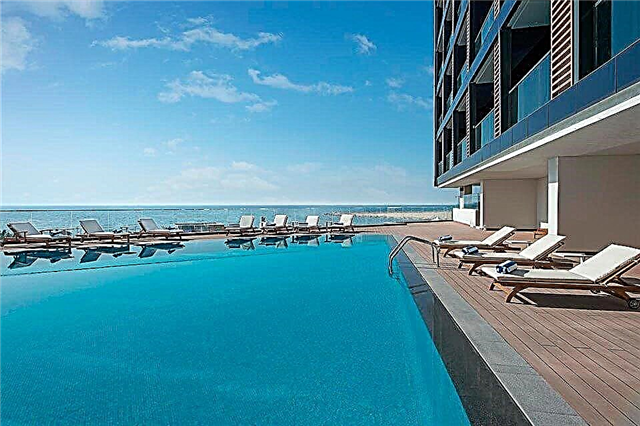Address: Russia, Yaroslavl region, Rostov the Great
Start of construction: 1670 year
Completion of construction: 1683 year
Number of towers: 11 pcs.
Main attractions: Assumption Cathedral, Belfry of the Assumption Cathedral, Gate Church of the Resurrection, Judgment Order, Church of St. John the Theologian, Church of Hodegetria, Church of the Savior Not Made by Hands (in the entryway), Church of St. Gregory the Theologian, Red Chamber, White Dining Room
Coordinates: 57 ° 11'05.2 "N 39 ° 24'59.6" E
Cultural heritage site of the Russian Federation
Content:
Short story
The construction of the Kremlin in Rostov was carried out in the period from 1670 to 1683. The customer for the construction work was the local Metropolitan Iona Sysoevich. According to his plan, the building was supposed to convey paradise in full accordance with the biblical description. In religious literature, paradise is represented as a garden with a pond in the center, and the garden itself is surrounded by walls with towers.

The Kremlin from a bird's eye view
In 1787 the metropolitanate moved to Yaroslavl, so the Rostov Metropolitan Court (another name for the Kremlin) lost its purpose and gradually fell into decay. Divine services in the local churches were no longer held, and the bishops planned to sell the entire metropolitan complex for scrap.
However, the Kremlin escaped such an unenviable fate thanks to the enlightened city merchants - the architectural ensemble was restored with the funds allocated to them (the work was carried out in the 60s and 80s of the XIX century).

View of the Rostov Kremlin from Lake Nero
In the fall of 1883, the Rostov Museum of Church Antiquities was opened in the Kremlin chamber under the name "Belaya". The initiators of this decision were A.A. Titov. and Shlyakov I.A. Since 1886, the museum came under the patronage of the heir to the imperial throne of tsarist Russia - it was Nicholas II, who later became tsar. In 1910, the State Duma finally secured the all-Russian status for the institution and decided to allocate a certain amount from the treasury for its maintenance. In 1953, due to a strong tornado, most of the monuments of the ensemble were damaged, but a little later all of them were restored.

From left to right: Odigitrievskaya tower, Church of St. John the Evangelist, main entrance, ticket office
The territory of the Rostov Kremlin is represented by three zones. These are the bishop's court, the Metropolitan Garden and the Cathedral Square. The oldest building in the city is also located here - the five-domed Assumption Cathedral, built in the distant 16th century. The majestic building of the shrine took the place of another, more ancient temple, once built of stone. The outer part of the Assumption Cathedral is decorated with various decorative details that give the building a special expressiveness.
Architectural features of the Rostov Kremlin
In addition to the Assumption Cathedral and the belfry, there were administrative buildings on the territory of the Metropolitan Court. One of them was the Judgment Order building.

From left to right: Church of Odigitria, Assumption Cathedral, Church of the Resurrection
The two-storey building appeared here in the middle of the 17th century. After some time, a gateway Church of the Resurrection with a pair of fortress turrets was erected next to it. The Holy Gates were located directly under the church, which acted as the main entrance to the courtyard. Due to the small amount of architectural delights in the upper part of the church, it seems formidable like a watchtower. But the lower part, flowing into the arch of the Holy Gates, looks simply luxurious thanks to the icon case, tiles and brick pattern.
Also, according to Jonah's plan, metropolitan mansions were erected for his residence and preservation of considerable monetary savings.

Church of the Resurrection
Initially, they were a 2-storey building, but at the end of the 17th century, a third floor was added to them, and a century later the whole building was decorated with classicist decor. Today, the metropolitan mansions are identified by narrow windows on the ground floor and an ornamental belt.
The state mansion, or the Red Chamber, is another solid building that is a landmark of the Rostov Kremlin. The special beauty of the building is achieved by the porch, completed with two tents. No less valuable historical monument on the territory of the Bishops' court remains the complex of the Church of the Savior Not Made by Hands.

Church of St. John the Evangelist view from the courtyard of the Kremlin
The lower floor of this building, erected in 1675, was occupied by economic services, on the upper floor there was the church building itself, the allotment chambers and the Refectory. This shrine was considered Jonah's home temple.
The gate church of St. John the Evangelist with five chapters was built last. She became the best building of that time - it was distinguished from previous buildings by rich decor on the entire outer surface of the building. The elongation of the main part of the shrine, together with the drums, visually make it taller. The construction of the Church of Hodegetria became the final point in the formation of the ensemble of the Rostov Kremlin.

Church of Hodegetria
As for the Kremlin walls and towers, their construction was usually carried out after the construction of most of the buildings. As befits real fortress walls, they were equipped with loopholes. At the same time, wide window openings were cut in the Kremlin towers, which is not typical for a fortress. The general decor of the towers also makes it clear that neither the towers nor the walls played any protective role, and the loopholes served as a tribute to traditions.
Of the buildings of economic importance, its own brewery and bakery deserve special attention. Their design was rather primitive, which made both buildings stand out against the background of the rich residence of the Metropolitan.

Left to right: Assumption Cathedral, belfry
Modern life of the Rostov Kremlin
Today the Rostov Kremlin exists as a museum-reserve of national importance. It is also a repository of the largest collection of enamel works - the oldest art of enamel painting. Having come to Rostov in the 17th century, it remains in demand in the city to this day.
The art gallery of the museum is represented by several halls. They exhibit portraits of the local nobility and merchants, noblemen in the 18th - 19th centuries. Works by Russian artists famous in the late 18th and early 20th centuries are also kept here. The avant-garde is also found among their works.

Red chamber
Inside the White Chamber of the Kremlin, which previously served as a dining room for the Rostov rulers, there is an exposition of church antiquities. It partially reproduces the first exposition of 1883. In the Red Chamber, built for the great sovereigns, today cutters of beads, porcelain, and ceramics are on display. There is also a valuable exhibition entitled "The Archeology of the Rostov Land".
The Hodegetria Church also hosts exhibitions. They are called "Wood in Everyday Life" and "Carved Sculpture and Icon". The exhibitions showcase wooden household items made by the best wood carvers. The items reflect the old and modern life of Rostovites.

